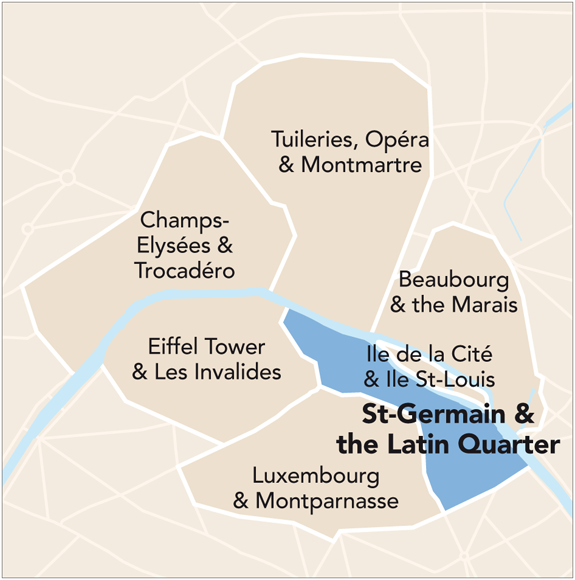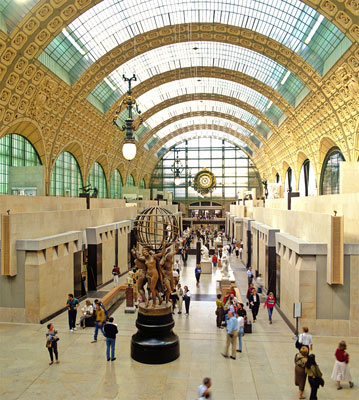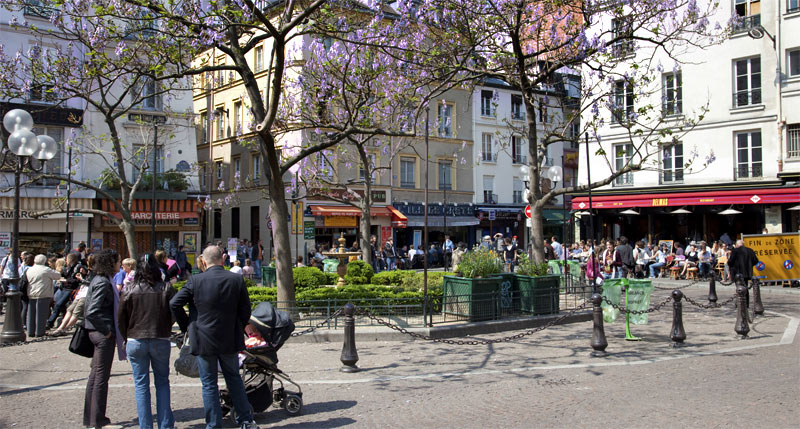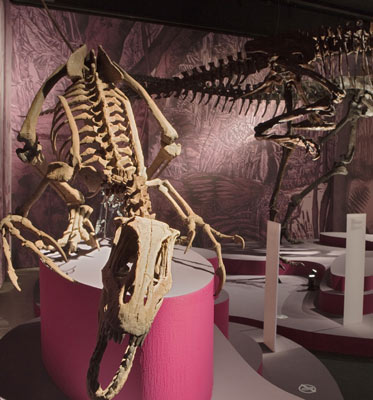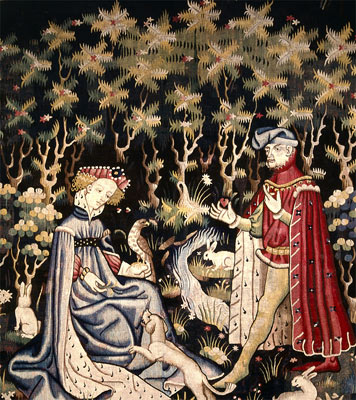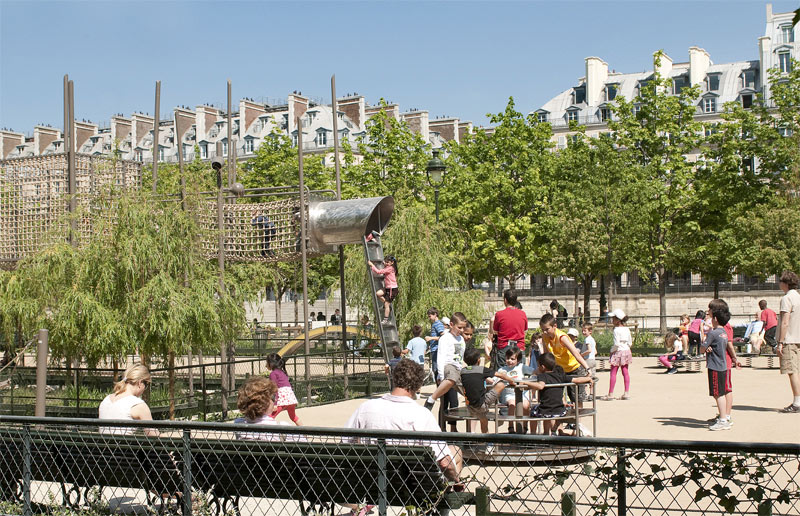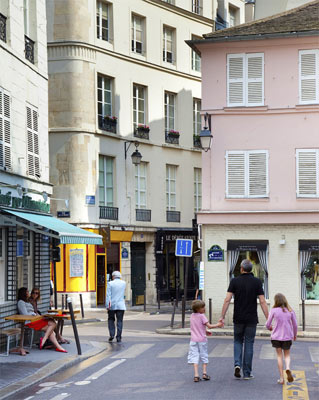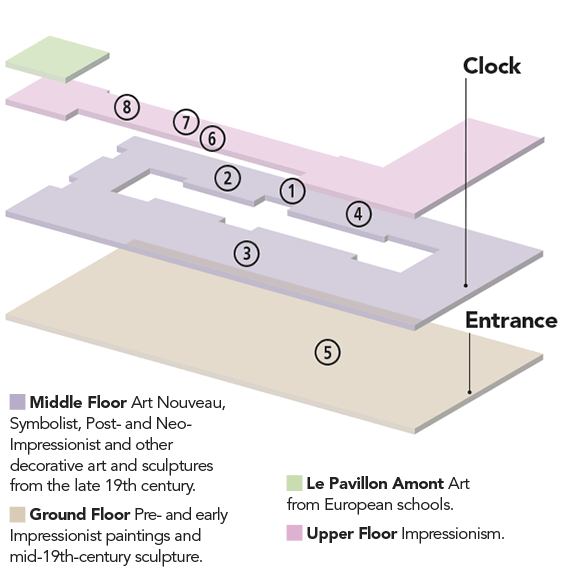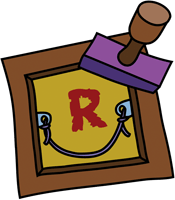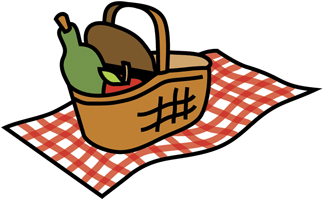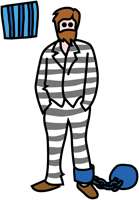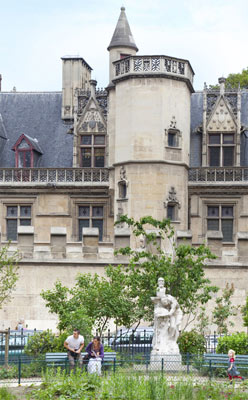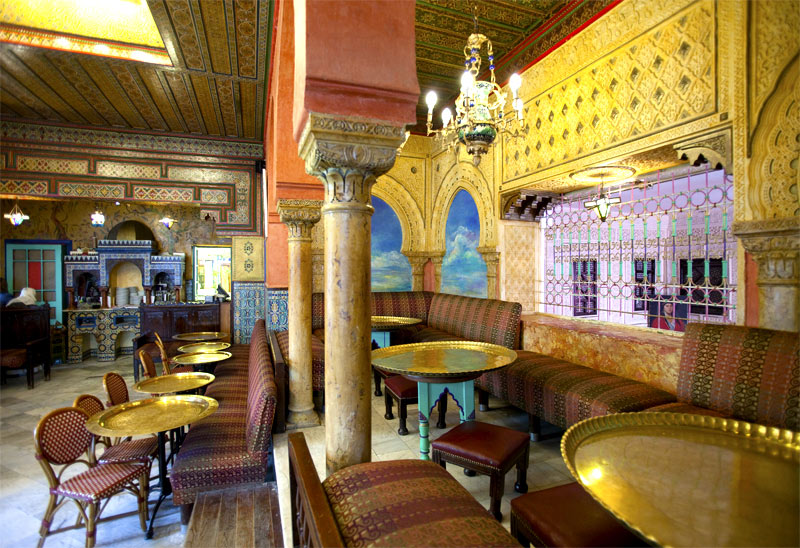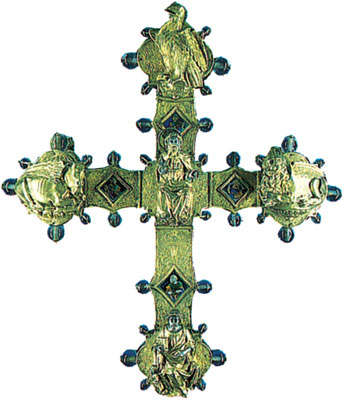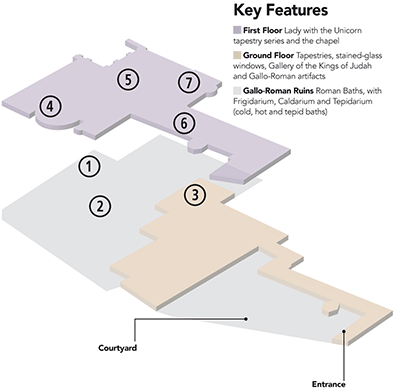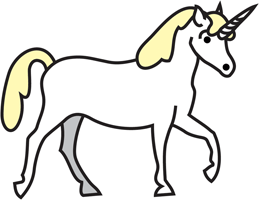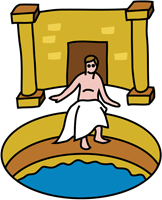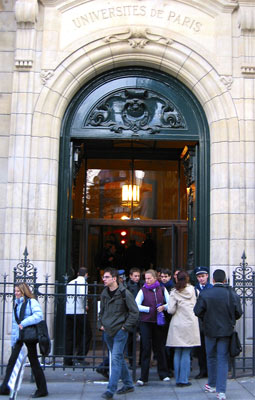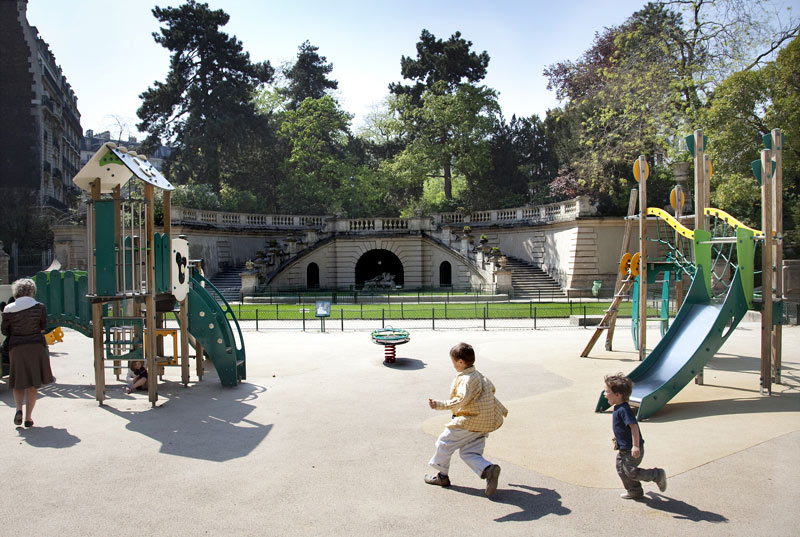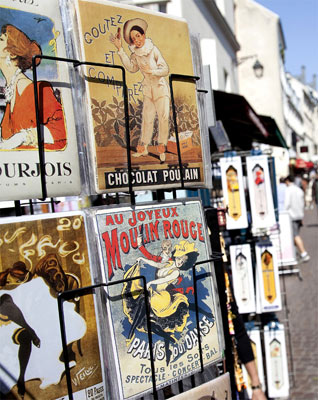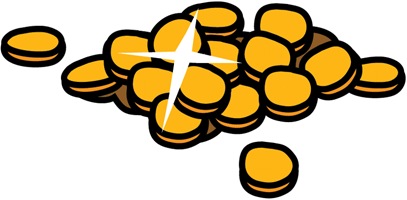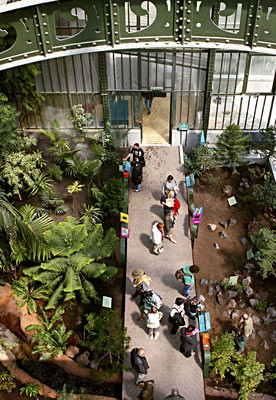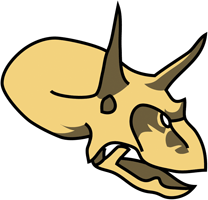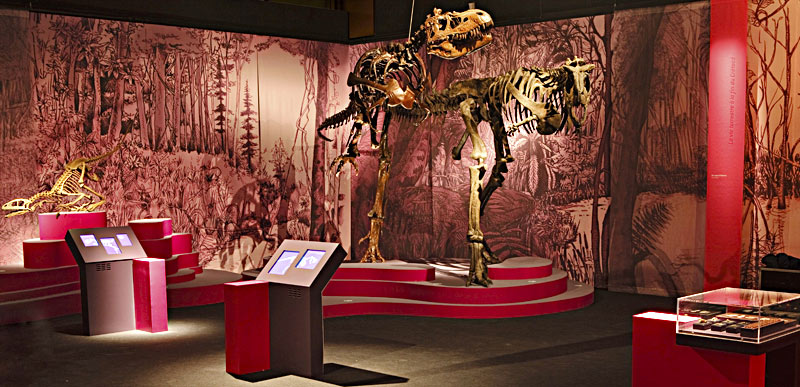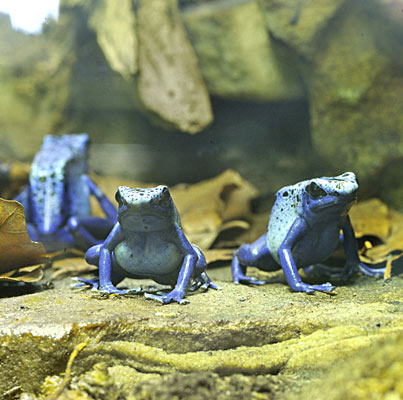The Musée d’Orsay is an excellent place to introduce young art-lovers to the bright colours and zest for life portrayed in Impressionist paintings. This neighbourhood is a good rainy-day option with kids, as the sights are all indoors and between them lie the shops and cafés of the Left Bank. The sights are spread over a large area, so do not try to cover all of it on foot – use the river boat, RER or bus, or jump in a taxi to travel between the museum and St-Germain.
1. Musée d’Orsay
All aboard for world-class art
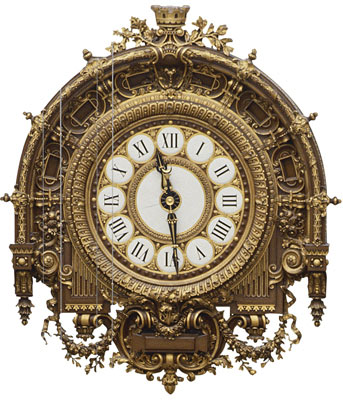
Clock in the Main Hall
Home to some of the most famous Impressionist paintings in the world, the light and airy Musée d’Orsay used to be a steam-train station, but it had to close because its platforms were too short for modern trains. The giant station clock is still here, and the halls are still bustling, but now with art lovers of all ages, who flock here to see the amazing collection of paintings, artistic oddities and gorgeous Art Nouveau objects. Kids as young as five come here on school trips, jumping on the glass floor that covers a scale model of the Opéra quarter.
Key Artists
1. Van Gogh Bedroom at Arles was one of Van Gogh’s favourite paintings. He also painted more than 40 self-portraits. Spot one hanging over the bed in the painting.
2. Georges Seurat and Paul Signac These artists were pioneers of the style called Pointillism, using tiny dots of colour that blend together to form an image when viewed from a distance. See Seurat’s Le Cirque (The Circus) and Signac’s Femmes au Puits (Women at the Well).
3. François Pompon Get nose to nose with the Ours Blanc, a huge polar bear sculpted between 1923 and 1933.
4. Henri Matisse In 1905, critics were shocked by the works of Matisse and his friends, which used bright, clashing colours, and called the artists fauves (wild beasts), from which Fauvism took its name. Look out for Matisse’s Luxe, Calme et Volupté.
5. Honoré Daumier The Washerwoman depicts one of the many women who would spend their days washing laundry in the Seine.
6. Pierre-Auguste Renoir Poor and excluded from the official art world, painters such as Renoir spent a lot of time in working-class bars and cafés painting real people. Look out for his Dancing at the Moulin de la Galette.
7. Claude Monet The Impressionists wanted to catch the moment. Monet was fascinated by how light changed at different times of the year especially when it snowed. The Cart is one of his many works on show at the museum.
8. Edgar Degas Interested in movement, Degas focused much of his work around two very diverse subjects – racehorses and dancers, the latter beautifully observed in his painting The Ballet Class.

Left Honoré Daumier Middle Claude Monet Right Pierre-Auguste Renoir
Kids’ Corner
Look out for…
-
The bronze elephant, rhinoceros and horse that welcome visitors to the museum.
-
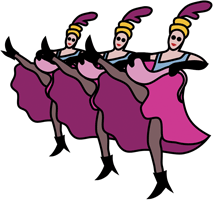
Toulouse-Lautrec’s Dance at the Moulin Rouge and Moorish Dance. Both are pictures of a dancer nicknamed La Goulue, or the glutton.
-
The names of all the places in France that the trains would depart for. They are written on the walls.
-
Rouen Cathedral. Monet painted lots of pictures of the cathedral, at different times of the day. The more it rained, or the hotter it got, the more its colours would change.
The Big “R”
When official art curators first saw the paintings of artists such as Cézanne and Monet they burst out laughing. “R” for réfusé – rejected – was stamped on the back of the canvases and they were returned. So the artists decided to exhibit these pictures in their own show, the Salon des Réfusés, or “Room of the Rejected”.
All aboard
When the first trains left Paris for Rouen and Orleans in 1843, it suddenly became possible for ordinary people to go for a walk in the countryside, have a picnic or spend a weekend on the beach in Normandy. Both Manet and Monet, who loved to paint outdoors, jumped on the train and followed them, painting wheat fields, haystacks and lily ponds in all kinds of weather. Cézanne and others soon followed.
2. St-Germain-des-Prés
The oldest church in Paris
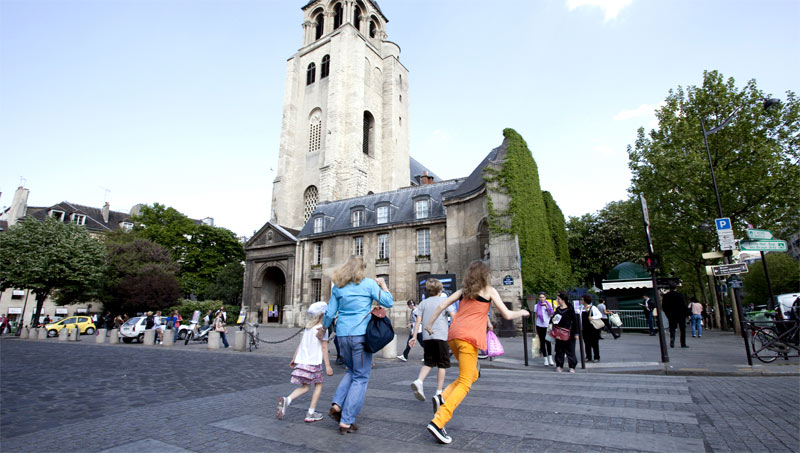
Tower of St-Germain-des-Prés, with one of the oldest belfries in France
The church of St-Germain-des-Prés once stood at the centre of a large abbey that was for many years located beyond the city walls. Founded in the 6th century by Childebert I, the son of Clovis, King of the Franks, the abbey was an important centre of intellectual life for the French Catholic church and also the burial place for the kings of France before the founding of the basilica of St-Denis. The church originally had three towers but the two located on the eastern side were badly damaged during the Revolution. The other tower still survives, housing one of the oldest belfries in France. The interior of the church is an interesting mix of architectural styles, with some 6th-century marble columns, Gothic vaulting and Romanesque arches. Among the notables buried inside are John Casimir, king of Poland, and the father of modern philosophy, René Descartes. Look out for a statue of the goddess Isis at the entrance of the church.
Kids’ Corner
Prison horrors
The abbey of St-Germain-des-Prés once housed a prison that stood on the corner of what is today Rue Gozlin and Rue Ciseaux. On 2 September 1792, 168 prisoners were herded out of the prison and hacked to pieces as they stumbled across the intersection. Their bodies were piled up in a heap outside the church and their blood-stained clothes were auctioned off to passers-by.
3. Cafés of St-Germain-des-Prés
Coffee for culture vultures
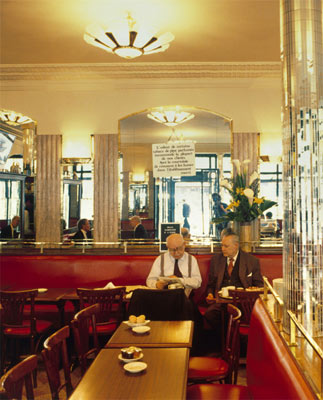
Interior of Café de Flore, the former meeting place of intellectuals
The café is a vital part of Parisian life and people of all ages come here for conversation, discussion and gossip over a coffee, apéritif or citron pressé; it is a great place to introduce kids to Parisian culture.
In the mid-20th century St-Germain was a buzzing place where American authors and jazz musicians mingled with local artists, writers and philosophers. Ernest Hemingway, Bud Powell, Pablo Picasso, Alfred Camus, Jean-Paul Sartre and Simone de Beauvoir all quenched their thirst in the cafés that cluster around the belfry of St-German-des-Prés. The most famous ones are Café de Flore; Les Deux Magots, which takes its name from the two statues of Chinese merchants inside; and Brasserie Lipp, a distinguished restaurant-brasserie with beautiful Art Deco tiles.
Although many tourists come here today the cafés are popular with Parisians too, and still form part of literary Paris. Nearby are two ancient streets: Rue Dragon, where Victor Hugo once lived; and Rue Servandoni, where Alexandre Dumas’s musketeer hero d’Artagnan lived at No. 12 then 7 Rue des Fossoyeurs.
Kids’ Corner
Things to do…
1. Order a menthe a l’eau, a bright green, minty soft drink, and discuss the meaning of life in a café.
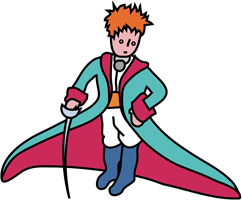
2. Read the famous The Little Prince by Antoine de St-Exupéry, who used to come to Café de Flore – it is a children’s book full of philosophical thoughts.
Caffeine crazy
Le Procope opened in 1686, in Rue de l’Ancienne Comedie, to sell an exciting new drink – coffee. The men whose ideas inspired the Revolution, and revolutionaries themselves, met here. The great philosopher Voltaire drank 40 cups of coffee and hot chocolate a day!
4. Musée Eugène Delacroix
A romantic daredevil
The leader of the French Romantic movement in painting, Eugène Delacroix lived his life like a hero in a 19th-century novel. He lived in this apartment, with its charming little courtyard garden, when he was decorating the ceiling of the nearby church of St-Sulpice. Some of his famous works, among them The Entombment of Christ, are on display in the museum. There is also a collection of personal items, including things he brought back from a visit to Morocco in 1832. This journey also inspired him to introduce images of wild animals and Arab civilization in his work.
Kids’ Corner
Things to do…
In Musée Eugène Delacroix, find the painter’s palette. What colours would you put on yours?
